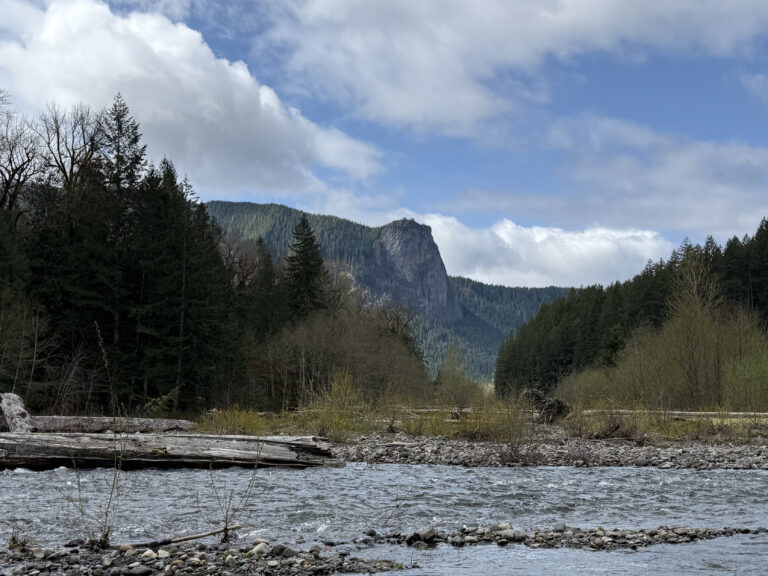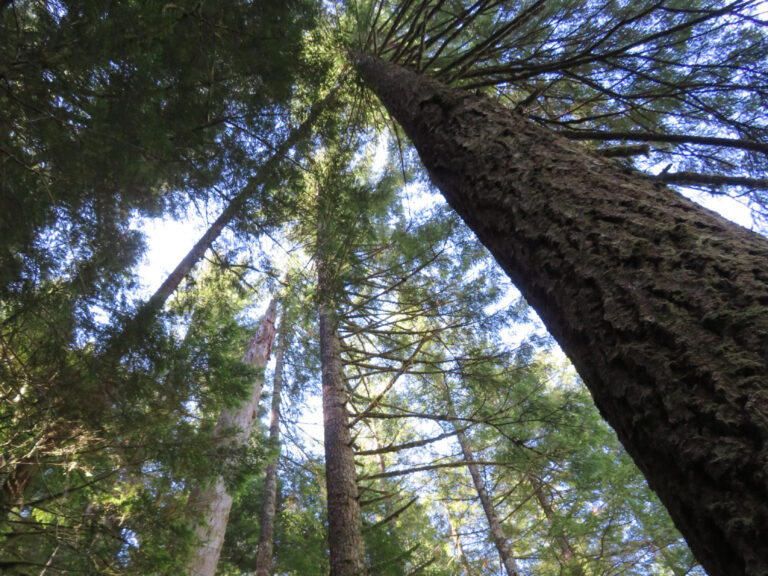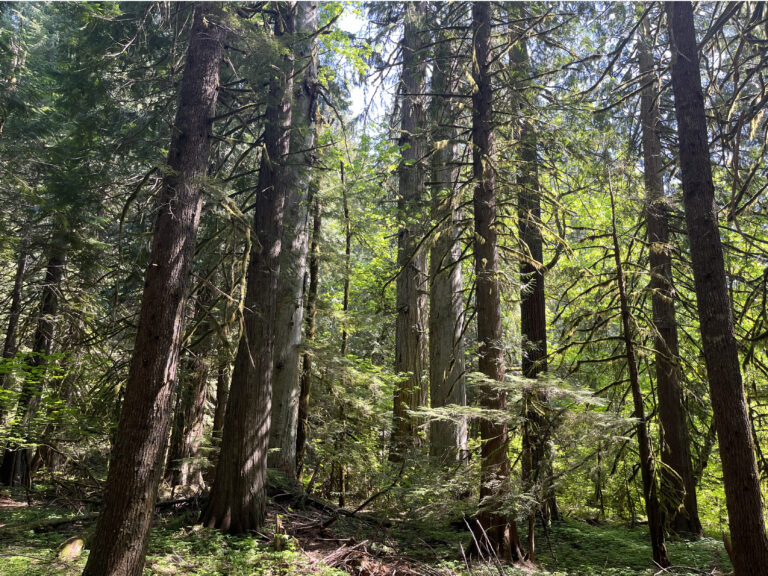Wildlife
SAFEGUARDING WILDLIFE AND RESTORING ECOSYSTEMS
Project Highlight: TRACKING MARTEN AND FISHER
The conservation of forest carnivores is a priority in the Pacific Northwest after decades of unregulated fur trapping, predator-control campaigns, and habitat loss. As a result of fur trapping and habitat loss, fishers (a member of the Mustelidae family, including weasels and wolverines) were locally extinct in the southern Washington Cascades until reintroductions began in 2015.
CFC has been working closely with scientists at Oregon State University to study this recovering population’s success, to understand how they interact with existing populations of Pacific marten (another native species from the mustelid family), and to discern what protections are needed to ensure their future survival.
Protecting and Restoring Biodiversity
- We protect and restore critical forest and aquatic habitat areas in and around the Gifford Pinchot National Forest.
- We fight to maintain existing protections within the Northwest Forest Plan and the Endangered Species Act for species such as the northern spotted owl while advancing policies that offer further protections.
- Through relationships and collaboration with the scientific community, CFC helps conduct studies and expand research to better understand the needs of local populations.
Our approach to protecting and restoring aquatic ecosystems
Address the impacts of a changing climate on local wildlife
Climate change is already impacting the animals in our region, and the effects are expected to accelerate in the coming years. Higher temperatures, more frequent drought conditions, and changes in the frequency or intensity of natural disturbances are harmful to many species that call this area home.
Cascade Forest Conservancy has assessed the steps that can be taken to ensure our ecosystems are as resilient as possible to these changes. Based on our research, we are working to preserve the areas of mature and old-growth forests that are increasingly important microclimates offering cooler temperatures than nearby younger or disturbed stands. We are also fighting to preserve the connectivity between important habitat areas, and taking steps to restore and cool our waterways to protect temperature-sensitive fish that require cold water to migrate and spawn, like salmon and trout.
Using science and strong partnerships for wildlife conservation
Understanding the local conservation needs of wildlife species oftentimes requires that we collect up-to-date information from the field and that we work closely with partners and researchers to better understand current distributions, habitat conditions, and optimal strategies for the survival and resilience of various species. We also regularly turn to the scientific literature to better design our strategies for conservation. This two-prong approach to science and conservation is a central part of our work.
Featured wildlife projects
Protecting the northern spotted owl
Wildlife camera surveys
Beaver reintroduction
SPEAK UP FOR A SUSTAINABLE FUTURE
Since 1985, Cascade Forest Conservancy has been your voice speaking for the areas in and around the Gifford Pinchot National Forest in southwest Washington. Join the 12,000 other members who support Cascade Forest Conservancy and are making a difference now.
News & Updates

ACTION ALERT: Millions of acres of public land could become eligible for sale. Take action to protect them now!

ACTION ALERT: TELL CONGRESS DEREGULATION AND UNRESTRICTED LOGGING ARE THE WRONG TOOLS TO REDUCE WILDFIRE RISK


